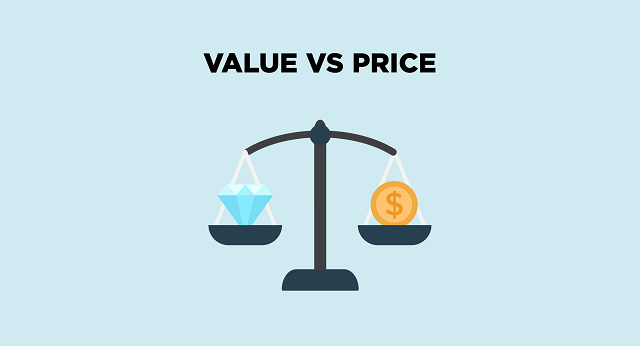Fiberglass doors emerge as the top choice for most homeowners, offering R-values between 5-7, moderate costs of $200-$3,800, and excellent weather resistance. Steel doors provide the best security and energy efficiency at budget-friendly prices ($150-$4,000), while wood doors deliver timeless beauty but require more maintenance. Your climate, security needs, and budget determine which optimal door material works best for your home.
Material Comparison Matrix: Costs, Durability & Energy Efficiency
Fiberglass leads in overall value, steel wins on security and affordability, and wood offers unmatched aesthetics. Each door material serves different priorities and budgets within the broader category of construction materials.
Current 2025 pricing shows steel doors cost $150-$4,000, making them the most budget-friendly option for energy-efficient doors. Steel doors cost $100 to $400 on average, while steel entry doors with sidelights and glasswork run $700 to $3,000. These doors achieve impressive R-values of 5-6 when filled with polyurethane foam insulation. Fiberglass doors range from $200-$3,800 and offer superior door durability with minimal maintenance needs. Fiberglass doors are known for their excellent insulation properties, with R-values typically between R-5 and R-7. Wood doors command premium prices of $500-$3,000 but typically achieve lower R-values of 2-4 due to their solid construction without additional insulation cores. Modern door manufacturers like Pella, Masonite, and Jeld-Wen continue innovating with premium door materials that meet evolving energy standards.
Cost Comparison
Steel doors deliver the best value for budget-conscious buyers, fiberglass offers long-term savings through low maintenance, and wood requires higher upfront investment plus ongoing care costs within any comprehensive door material selection process.
Installation costs add $440-$1,800 to your total project budget regardless of material choice. The average cost to install a pre-hung exterior door is $440 to $1,800, depending on the material and quality of the door. Steel doors prove most economical over time due to their durability and minimal maintenance schedules. Fiberglass doors cost more initially but eliminate the painting and refinishing expenses that wood doors require every few years. Wood front door maintenance includes periodic staining, sealing, and potential repairs from warping or pest damage, making them the costliest option long-term. The door assembly components, including door frame components like jambs and thresholds, significantly impact total project costs regardless of your chosen surface material.

R-Values & Insulation Ratings
Modern insulated doors significantly outperform solid wood in thermal efficiency, with steel and fiberglass doors achieving R-values 2-3 times higher than traditional wood options.
The R-values of most steel and fiberglass-clad entry doors range from R-5 to R-6, excluding a window. For example, a 1-1/2 inch (3.81 cm) thick door without a window offers more than five times the insulating value of a solid wood door of the same size. Fiberglass doors excel with door insulation ratings reaching R-7 in premium models, thanks to their foam cores and naturally low conductivity. Steel entry doors achieve similar R-5 to R-6 ratings through polyurethane foam cores, though the steel skin can conduct heat if exposed to direct sunlight. Wood doors max out around R-4 for thick solid wood construction, as they lack the engineered insulation systems found in modern alternatives. The door core material (Latin: materia, meaning substance) proves more material (important) to energy performance than the exterior surface finish.
Climate-Specific Recommendations for Door Materials
Humid climates favor fiberglass and steel, cold regions benefit from high R-value insulated options, and coastal areas need corrosion-resistant materials to withstand salt air exposure.
For those who want a natural-looking door but live in humid, muggy climates, fiberglass and composite doors are a practical option. These materials can be made to look like wood but require almost no maintenance. In hot, dry climates, fiberglass doors resist fading and warping better than wood or vinyl alternatives. Steel doors excel in severe weather conditions including thunderstorms and high winds, though they can become hot to touch in direct sunlight. Cold climate installations should prioritize doors with R-values of 5 or higher to minimize heat loss and reduce energy bills. This contrasts sharply with inferior door choices that lack proper insulation or weather sealing.
Coastal homeowners face unique challenges from salt air corrosion. Metal doors can quickly rust in humid climates, making fiberglass the superior choice for oceanfront properties. Wood doors work best in covered areas with protection from direct weather exposure, such as homes with porticos or storm doors. Regional building codes may also influence material selection, particularly in hurricane-prone areas where impact-rated doors become essential safety features. The entryway system must integrate seamlessly with local climate demands to ensure long-term performance.
Security & Maintenance: Choosing the Right Material
Steel doors provide maximum break-in resistance, fiberglass offers low-maintenance durability, and wood requires regular care but can be easily repaired when damaged.
Door security ratings follow ANSI/BHMA standards, with Grade 1 providing the highest protection. ANSI Grade 1 door locks offer the highest level of lock security. These locks are very difficult to pick or break and are resistant to any tampering with the lock’s parts. Steel construction naturally supports higher security grades due to its strength and resistance to forced entry. Fiberglass doors can fracture under extreme impact but offer excellent resistance to weather-related damage and don’t dent like steel. Wood doors provide moderate security but excel in repairability – scratches and dings can be sanded and refinished rather than requiring full replacement. Professional-grade materials incorporate advanced fire resistance properties that exceed basic residential requirements.
Maintenance schedules vary dramatically by material choice. Steel doors need annual applications of car wax or linseed oil to prevent corrosion, plus touch-up painting for any scratches. Fiberglass doors require only periodic cleaning and occasional repainting as finishes fade from UV exposure. Wood demands the most attention with regular staining, sealing against moisture, and protection from pest damage. However, properly maintained wood doors can last 30+ years, matching or exceeding the lifespan of synthetic alternatives. Some premium doors now feature acoustic properties that reduce noise transmission, adding another dimension to front door construction considerations.
Smart Home Integration & Future-Proofing
Modern door materials easily accommodate smart lock technology, with steel and fiberglass frames providing the structural stability needed for advanced security systems.
Smart locks and connected door security ratings work with all major entry door options, though installation considerations vary. Steel doors provide excellent mounting stability for heavy electronic locks and don’t expand or contract seasonally like wood. Fiberglass doors offer similar stability while their composite construction accommodates the wiring runs needed for integrated sensor systems. Wood doors may require additional reinforcement around lock areas to prevent splitting during installation or use. High-quality materials ensure compatibility with evolving technology standards while maintaining structural integrity.

Future-proofing considerations include compatibility with evolving standards and technologies. Energy-efficient doors that meet current ENERGY STAR requirements position your home for potential tax credits and rebates. High-performance weather sealing systems ensure compatibility with advanced climate control systems and help maintain indoor air quality standards. Modular hardware systems allow upgrading lock technology without replacing the entire door assembly, extending your investment’s lifespan while adapting to new security innovations.
Best Front Door Material Selection Guide
Match your material choice to your priorities: steel for security and budget, fiberglass for low maintenance and efficiency, wood for aesthetics and tradition.
Your decision should weigh five key factors: upfront cost, long-term maintenance, energy efficiency, security needs, and aesthetic preferences. Steel doors win for budget-conscious buyers seeking maximum security and energy performance. They provide excellent door durability at entry-level prices while supporting the highest security grades. Fiberglass doors suit homeowners wanting wood’s appearance without maintenance hassles, particularly in challenging climates. Their superior R-values and weather-resistant properties make them ideal for extreme temperature regions, demonstrating why durable door materials have largely replaced traditional options.
Wood doors remain the premium choice for traditional architecture and custom designs. They offer unmatched visual warmth and can be customized to exact specifications. However, wood requires commitment to regular maintenance and works best in protected installations or moderate climates. Consider your household’s long-term needs – busy families benefit from low-maintenance fiberglass, while design-focused homeowners may prefer wood’s natural beauty despite higher care requirements. This represents a fundamental shift away from poor door materials that compromise either performance or aesthetics.
Installation and Professional Recommendations
Professional installation ensures optimal performance regardless of material choice, with proper weatherstripping and thermal breaks critical for energy efficiency.
Before adding the interior trim, apply expanding foam caulking to seal the new doorframe to the rough opening and threshold. This will help prevent air from getting around the door seals and into the house. Quality installation impacts performance more than material selection in many cases. Pre-hung doors cost more upfront but install faster and ensure proper alignment. Weatherstripping quality and frame preparation determine actual energy performance regardless of your chosen material’s rated R-value. The complete door assembly requires careful attention to all components for optimal results.
Professional installers can recommend specific products based on your home’s architectural style, local climate conditions, and security requirements. They ensure compliance with local building codes and can advise on optimal hardware selections. Storm doors may provide additional protection for wood doors in harsh climates, while thermal breaks in metal frames prevent condensation issues. Proper installation includes checking for air leaks, ensuring smooth operation, and providing maintenance guidance specific to your chosen material.





